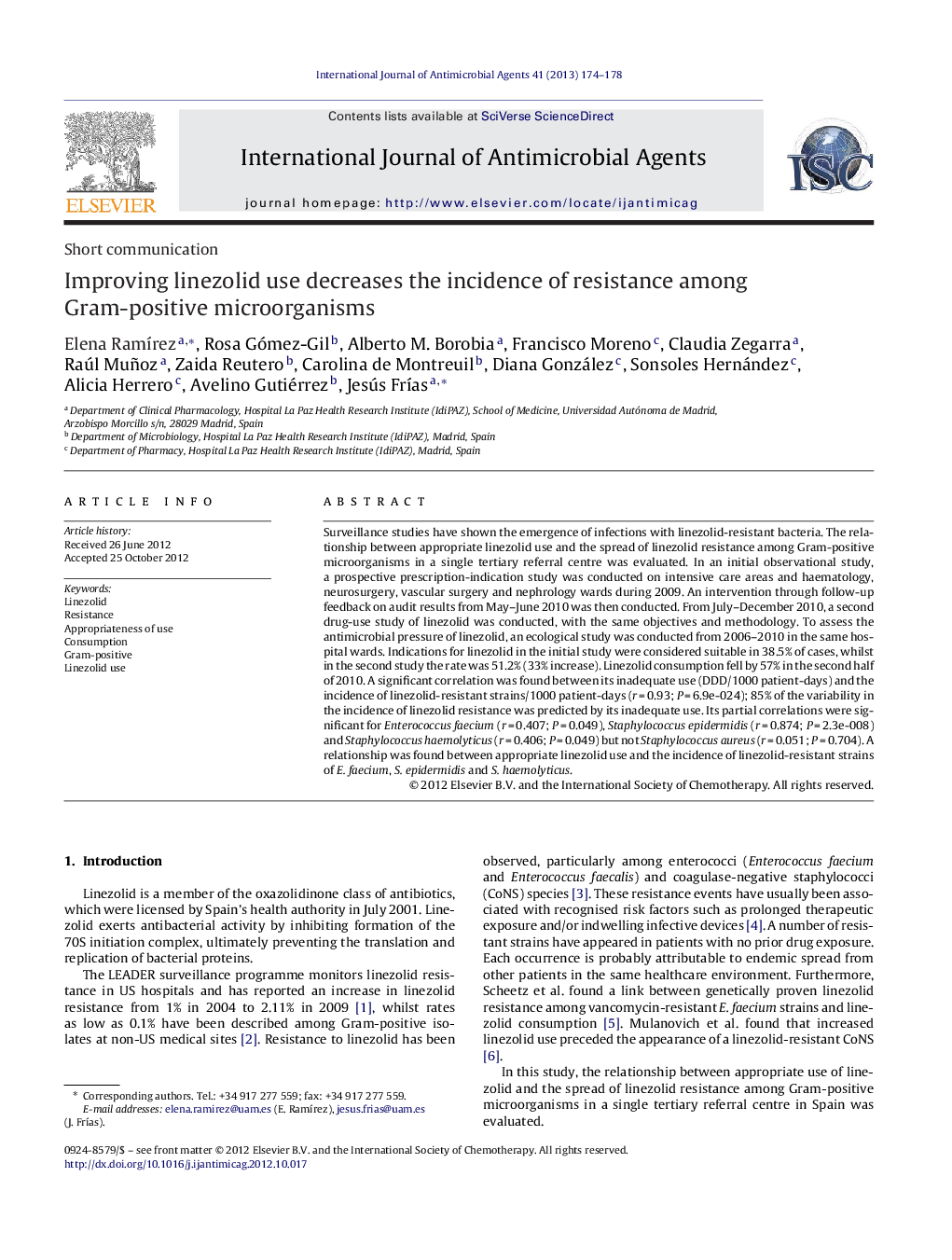| Article ID | Journal | Published Year | Pages | File Type |
|---|---|---|---|---|
| 6118013 | International Journal of Antimicrobial Agents | 2013 | 5 Pages |
Abstract
Surveillance studies have shown the emergence of infections with linezolid-resistant bacteria. The relationship between appropriate linezolid use and the spread of linezolid resistance among Gram-positive microorganisms in a single tertiary referral centre was evaluated. In an initial observational study, a prospective prescription-indication study was conducted on intensive care areas and haematology, neurosurgery, vascular surgery and nephrology wards during 2009. An intervention through follow-up feedback on audit results from May-June 2010 was then conducted. From July-December 2010, a second drug-use study of linezolid was conducted, with the same objectives and methodology. To assess the antimicrobial pressure of linezolid, an ecological study was conducted from 2006-2010 in the same hospital wards. Indications for linezolid in the initial study were considered suitable in 38.5% of cases, whilst in the second study the rate was 51.2% (33% increase). Linezolid consumption fell by 57% in the second half of 2010. A significant correlation was found between its inadequate use (DDD/1000 patient-days) and the incidence of linezolid-resistant strains/1000 patient-days (r = 0.93; P = 6.9e-024); 85% of the variability in the incidence of linezolid resistance was predicted by its inadequate use. Its partial correlations were significant for Enterococcus faecium (r = 0.407; P = 0.049), Staphylococcus epidermidis (r = 0.874; P = 2.3e-008) and Staphylococcus haemolyticus (r = 0.406; P = 0.049) but not Staphylococcus aureus (r = 0.051; P = 0.704). A relationship was found between appropriate linezolid use and the incidence of linezolid-resistant strains of E. faecium, S. epidermidis and S. haemolyticus.
Related Topics
Life Sciences
Immunology and Microbiology
Applied Microbiology and Biotechnology
Authors
Elena RamÃrez, Rosa Gómez-Gil, Alberto M. Borobia, Francisco Moreno, Claudia Zegarra, Raúl Muñoz, Zaida Reutero, Carolina de Montreuil, Diana González, Sonsoles Hernández, Alicia Herrero, Avelino Gutiérrez, Jesús FrÃas,
